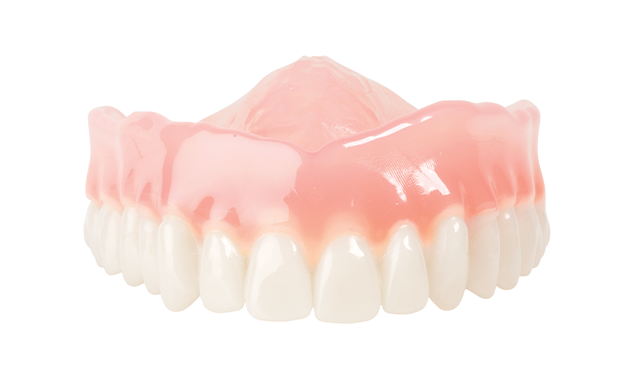CAD dentures have changed the try-in process for edentulous patients.

Marks says accurate bite registration is essential. He says you often hear technicians criticize the quality of a dentist’s final impressions they receive at the lab. However, he thinks the bite registration for dentures and partials is much more challenging.
“Going back to when I used to do all my dentures traditionally, if I ever had to reset teeth after a try-in or remake a denture, it was more often because of poor registrations than poor impressions,” Marks says.
When it comes to bite registration inaccuracies, Marks says it is not necessarily a lack of skill on the part of the dentist. Patients play a role here, too. The fully edentulous patient needs guidance into the correct position because they do not remember how biting with teeth feels. As a result, patients cannot always reproduce that position properly when the clinician tells them to “bite down”.
“They have forgotten what that is supposed to feel like after living with the absence of teeth for so long,” he says.
Another potential benefit of having a CAD try-in appointment for 3D printed or digital try in for full dentures is taking a new final impression using the try-in denture as an impression tray. Marks says this works if a dentist wants to capture a new impression without making a custom tray.
“So, you potentially save another clinical appointment process. That’s possibly one of the biggest benefits of the technology,” Marks says.
Taking the try-in appointment to the next level with full-function try-ins
A fully functional try-in is a milled or printed appliance out of a poly (methy methacrylate) (PMMA) disc or puck. These fully functional try-ins are excellent for checking the utility of a denture for phonetics and occlusion.
Material manufacturers have products ready for digital fabrication of functional try-ins. AvaDent Digital Denture Solutions has a fully functional try-in appliance called the Bio-functional Try-In by Lars Bouma. Soon, Ivoclar Vivadent will have the ProArt CAD Try-In discs made from a white PMMA material to make functional try-ins. The ProArt discs can also be used for the digital fabrication of impressions or functional trays as well. Kulzer has dima® Print materials optimized for 3D printing of prototypes for try-ins or whatever else you might need.
Although checking the shade of the teeth might not be possible, there are a few patient benefits to having a denture that does not a use wax set up for the esthetic zone. In some cases, dentists have patients bring in foods they like to eat or give them something to eat, like a piece of candy, so the patient can test the denture’s functionality.
Marks says he knows some dentists use the take-home try-in to give patients a chance to practice talking and eating with the appliance. The purpose is to provide the patient with more time to evaluate the prosthesis on their own, without the clinician’s input.
“Often, the clinician also has the patient keep it as a separate denture if they ever need it for some reason such as they break or lose theirs,” Marks says. “That is potentially a cool feature of the CAD try-in technology.”
Trending: Choose the right patients for flexible removable partial dentures
Marks also appreciates how the digital workflow for removable dentures and partial dentures fabrication allows the technician or clinician to make a new prosthesis from the old file. This opportunity for simplified remakes presents a significant improvement to the patient experience, especially compared to the traditional fabrication method. In the conventional workflow, a new denture or partial denture would require starting over from the beginning at the initial impression step.
“Either proactively, meaning the patient wants a duplicate denture made the same time they’re getting a new one, or in the future, if they ever need to remake it for whatever reason, then it is easy to do using the data you already have,” Marks says. “You can practically just do it over the phone.”
Marks says depending on the restoration, the CAD Try-in is still an essential part of the denture workflow, although more for a full removable denture than a partial removable denture.
“I don’t know that we’ll ever not need it at all, but obviously the way in which we do it has changed significantly with the adoption of digital dentures,” Marks says.
